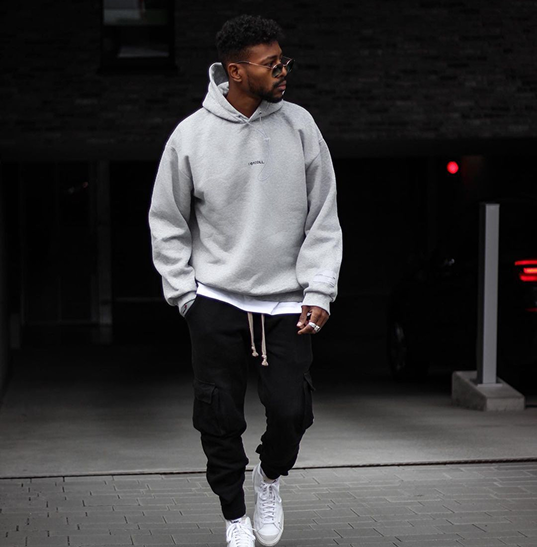Introduction: The Quiet Revolution of Simplicity
Among all garments ever created, few have achieved the quiet ubiquity of the white T-shirt. It’s the simplest of all pieces — a flat expanse of cotton, pure and clean. Yet within its blankness lies a universe of meaning: rebellion, identity, art, and attitude.
From Marlon Brando’s defiant swagger in A Streetcar Named Desire to Steve Jobs’ black-turtleneck minimalism and Kanye West’s normcore revolution, the white tee has symbolized both nonchalance and intention. It’s paradoxical — effortless yet curated, plain yet loaded with emotion.
This essay explores how the white T-shirt became fashion’s most universal code — a form of minimalist power that whispers louder than the flashiest prints ever could.
- Humble Beginnings: From Undergarment to Icon
The white tee started as underwear. Literally.
In the early 20th century, it was a functional underlayer for sailors and laborers, designed to absorb sweat and protect outer garments. It wasn’t meant to be seen.
Then came World War II — American soldiers wore their undershirts in tropical climates, sleeves rolled up, confidence on display. Post-war, these same men returned home, their white tees now carrying the aura of strength, freedom, and masculinity.
By the 1950s, the garment had exploded into pop culture thanks to Hollywood icons like James Dean and Marlon Brando. Their plain tees weren’t just clothing — they were statements of rebellion against the starched-shirt conservatism of the previous generation.
The white T-shirt had broken free.
- The Minimalist Code
Minimalism isn’t absence — it’s precision. And the white T-shirt embodies that principle perfectly.
Where other garments rely on logos, textures, and prints to speak, the white tee’s silence becomes its voice. It strips fashion down to form and proportion.
This simplicity amplifies everything else:
The fit becomes the message.
The texture becomes the luxury.
The color (or absence of it) becomes purity itself.
In a world drowning in visual noise, wearing a white tee feels like taking a breath of clean air. It’s not attention-seeking — it’s self-assured. It’s the fashion equivalent of saying, “I don’t need to try this hard.”
That confidence — that unspoken calm — is why minimalism never truly fades.
- The White Tee as a Cultural Mirror
The beauty of the white T-shirt is its adaptability. It reflects its wearer.
On a rock star, it looks rebellious.
On an artist, intellectual.
On a tech founder, utilitarian.
On a model, effortlessly sensual.
On the street, democratic.
It means nothing — and everything — depending on context.
In the 1990s, Calvin Klein made the white tee part of minimalist luxury, pairing it with clean denim and stripped-back photography. The message was clear: authenticity is sexy.
In the 2010s, streetwear and high fashion merged the tee with oversized cuts and luxury materials, elevating the everyday into the extraordinary.
Now, the white tee exists in every wardrobe — a cultural equalizer. It’s worn by billionaires and students, by runway models and skateboarders, by rebels and CEOs. It has become fashion’s purest democracy.
- The Craft of Simplicity
What makes a “perfect” white tee?
It sounds trivial until you try to find one.
Designers obsess over the minutiae — the neckline curve, the weight of the cotton, the density of the weave, the cut at the shoulder. Each choice affects how the tee drapes, how it catches light, how it feels against skin.
A luxury white T-shirt from Sunspel, Maison Margiela, or The Row isn’t about branding — it’s about fabric science and human proportion. The goal: to make simplicity feel inevitable.
Good minimalism is invisible design — the kind that hides its effort behind clarity.
That’s why some people collect white tees the way others collect art. Each one represents a study in balance: the perfect intersection of comfort, structure, and air.
- The White Tee as Blank Canvas
Artists love the white T-shirt because it’s a paradox — a blank space that’s already loaded with meaning.
It has become a literal canvas for messages, graphics, and art movements. From Vivienne Westwood’s punk political prints in the 1970s to Supreme’s red box logo in the 1990s, the white tee has carried statements that shaped subcultures.
But even when left blank, it remains powerful. It’s the starting point of design — the silence before the note.
Every artist, every designer, begins with white. It’s a space of potential, an invitation to create or to refrain. That’s why the plain white T-shirt, untouched, still feels complete — because it represents the freedom to do nothing.
- The Psychology of Purity
There’s something inherently emotional about the color white. It suggests clarity, rebirth, and truth.
Psychologically, white is associated with simplicity, honesty, and openness — qualities deeply tied to authenticity. When worn, it reflects these traits subconsciously.
That’s part of why people gravitate toward white tees after emotional resets: breakups, new jobs, relocations. It’s a visual declaration of renewal — “I’m starting over.”
And yet, the white tee’s vulnerability — its tendency to stain, to wear, to yellow — reminds us that perfection is temporary. The marks of time give it character, just like wrinkles on skin or scratches on leather.
That fragility is part of its beauty.
- The Economics of Everyday Luxury
In the age of fast fashion, a white tee can cost $5 — or $500. The difference lies in philosophy.
A $5 tee might last a few washes. A $500 tee, while seemingly indulgent, often represents sustainable production, ethical materials, and artisan-level construction. It’s not just cotton — it’s a statement against disposability.
Minimalism has always been tied to conscious consumption. The fewer pieces you own, the more each piece matters. A perfect white tee becomes your uniform — an intentional simplification of choice.
That’s why creatives and entrepreneurs often gravitate toward minimal wardrobes: it’s not laziness, but focus. The white tee removes noise, allowing thought and action to take center stage.
- Streetwear Minimalism: The New Cool
In the 2020s, minimalism took on new meaning in streetwear. The logo-saturated era gave way to blank essentials — subtle, oversized, tonal pieces from brands like Fear of God Essentials, COS, UNIQLO U, and Pangaia.
The white T-shirt became the centerpiece of this shift — an expression of quiet confidence in a world of overexposure.
This wasn’t about standing out. It was about standing still. About knowing that personal presence, not product branding, defines style.
Minimalism’s modern form isn’t sterile; it’s soulful. It’s about texture, proportion, light, and life. The white tee embodies that ethos perfectly.
- The White Tee and the Body
Few garments reveal as much about a person as a plain white tee.
It contours the body gently, revealing posture, movement, and attitude. It frames the collarbone, shapes the shoulders, and responds to every gesture.
That’s why stylists call it “honest clothing.” It doesn’t hide behind structure or layers — it reveals character.
When a white tee fits right, it’s transformative. It makes the wearer look grounded, comfortable, confident — like they belong in their own skin. That’s power without excess.
- The Future of Minimalism
As fashion continues to evolve toward sustainability and digital aesthetics, minimalism is entering a new chapter.
The next generation of white tees will likely involve:
Bio-based fibers like bamboo and algae cotton blends.
Circular production models to eliminate waste.
Smart textiles that regulate temperature or resist stains.
But beyond innovation, the philosophy remains: less is more. The future white tee will still speak softly — just more intelligently.
In an age of sensory overload, minimalism offers peace. And the white tee remains its simplest form of expression.



